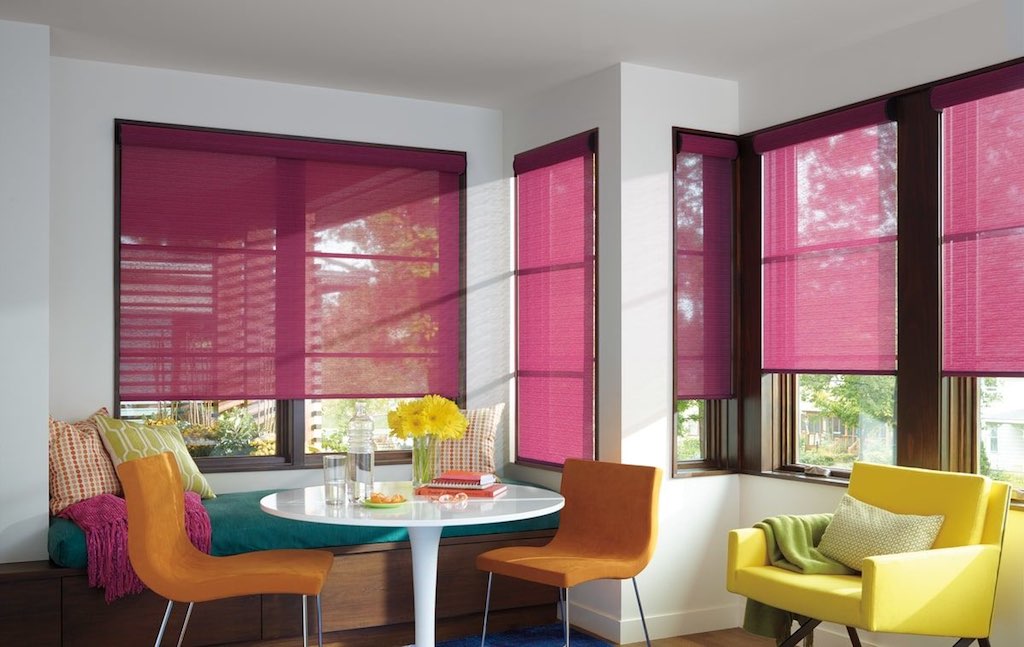
Window blinds, window shades, and shutters have been an essential part of homes for centuries. They offer privacy, control over sunlight, and can be a significant aspect of your home’s décor. With technological advancement, motorized blinds, motorized shutters, and even smart shades have entered the market. But how do these new innovations compare to traditional window treatments? This article will explore the pros and cons of smart blinds and traditional blinds.
Understanding blinds: What are they?
Blinds and shades are window coverings that provide control over the amount of light entering a room. Traditional window blinds and shades are manually operated: when you want more or less light in the room, or more or less privacy, you usually have to pull on a cord, turn a level of some kind to change the blinds. Motorized blinds and smart blinds, on the other hand, can be controlled remotely either with the press of a button on the wall or, in the case of smart blinds, by opening an app on your phone. Smart shutters, smart blinds, and smart shades can be part of a connected home system, allowing for more advanced control and customization.
Comparing the functionality: Smart blinds vs traditional blinds
The primary difference between traditional blinds and smart blinds lies in their operation. Traditional blinds are manually operated, while smart blinds can be controlled with a remote control or even a smartphone app. Smart blinds take this even a step further, offering connectivity with other smart devices and allowing more flexibility in control. Imagine controlling your smart shades through voice commands or scheduling your smart blinds to close at sunset automatically; these are just a few examples of what’s possible with modern technology.
Pros of smart blinds
- Ease of use: Smart blinds and smart shades allow for remote operation through apps or voice commands, making them accessible for people with mobility issues. This technology eliminates the need to manually adjust blinds, providing a convenient solution for everyone in the home.
- Customization and scheduling: You can schedule motorized blinds and shades to operate at specific times or respond to weather conditions, adding an extra layer of convenience. Whether you want the blinds to open with the sunrise or to close when it gets hot, smart blinds offer a tailored experience.
- Energy efficiency and potential savings: Smart blinds can be set to optimize natural light, reducing the need for artificial lighting. By efficiently managing sunlight, these blinds can help you save on energy bills, making them an environmentally friendly choice.
- Integration with smart home systems: Smart blinds and smart shutters can be part of your smart home ecosystem, working in tandem with other smart devices. This connectivity allows you to create cohesive home automation, where devices work together for a seamless experience.
Cons of smart blinds
- Initial cost and installation complexity: Smart shades and motorized shutters may require professional installation and can be more expensive upfront. The technology and materials used often drive up the cost, and specialized installation may be needed, increasing the initial investment.
- Dependence on technology and potential glitches: Being technology-driven, smart blinds can be susceptible to technical problems such as software bugs or connectivity issues. This dependence on technology means that if something goes wrong, it might require specialized troubleshooting.
- Privacy concerns: Security issues with connected devices may lead to privacy concerns with smart shutters and blinds. Without proper security measures, smart blinds could potentially be hacked, leading to unauthorized access to personal information or control over the blinds.

Pros of traditional blinds
- Simplicity and reliability: Traditional window shades and shutters are simple to operate and less likely to malfunction. With manual operation, there are no electronic components that could fail, leading to a more reliable and long-lasting solution.
- Lower initial cost: Traditional window blinds are often more budget-friendly. Without the added costs of motorization and smart technology, these blinds are usually more accessible, offering a cost-effective option.
- No need for technical knowledge: Anyone can operate traditional window blinds without needing to understand smart technology. This makes them suitable for all ages and tech-savvy levels, providing a universally friendly option.
Cons of traditional blinds
- Lack of automation and convenience: Without motorized features, traditional blinds can’t offer the same level of convenience as motorized blinds or smart blinds. Manual adjustment may be cumbersome for large windows or hard-to-reach areas, limiting their functionality.
- Limited customization: Traditional window shades and blinds do not provide the scheduling or automation available with smart alternatives. They require manual intervention for adjustments, limiting the ability to personalize and automate your window treatments.
- Potential energy inefficiency: Without the smart control of sunlight, traditional blinds may lead to higher energy bills. Lacking the technology to respond to weather conditions or time of day, traditional blinds may not optimize natural light as effectively as their smart counterparts.
Factors to consider when choosing between smart and traditional blinds
When deciding between smart blinds and traditional blinds, consider the following:
- Budget: Traditional window blinds are typically less expensive, but smart blinds offer more features.
- Lifestyle and preferences: If you enjoy the convenience of automation, motorized shades and smart blinds may suit you best.
- Compatibility with existing home systems: Smart blinds may require integration with other smart devices in your home.
- Environmental impact: Consider the energy-saving potential of smart shades and blinds.
Expert insights and advice
Before making a decision between smart blinds and traditional blinds, it’s wise to consult with professionals who can assess your individual needs and provide tailored solutions. Safety considerations, especially with children and pets, should also be a priority when choosing window coverings.

Making the right choice for your home
Window blinds, shutters, and shades are more than just functional items; they are part of your home’s personality. Whether you choose traditional or motorized blinds, smart shades or smart shutters, the right choice depends on your preferences, needs, and budget.
Embrace the technological advancements with smart blinds or enjoy the timeless simplicity of traditional window blinds. Either way, the options are plentiful, and the choice is yours.
This article was drafted using AI technology and then reviewed, fact-checked, and revised by a member of our editorial team.




